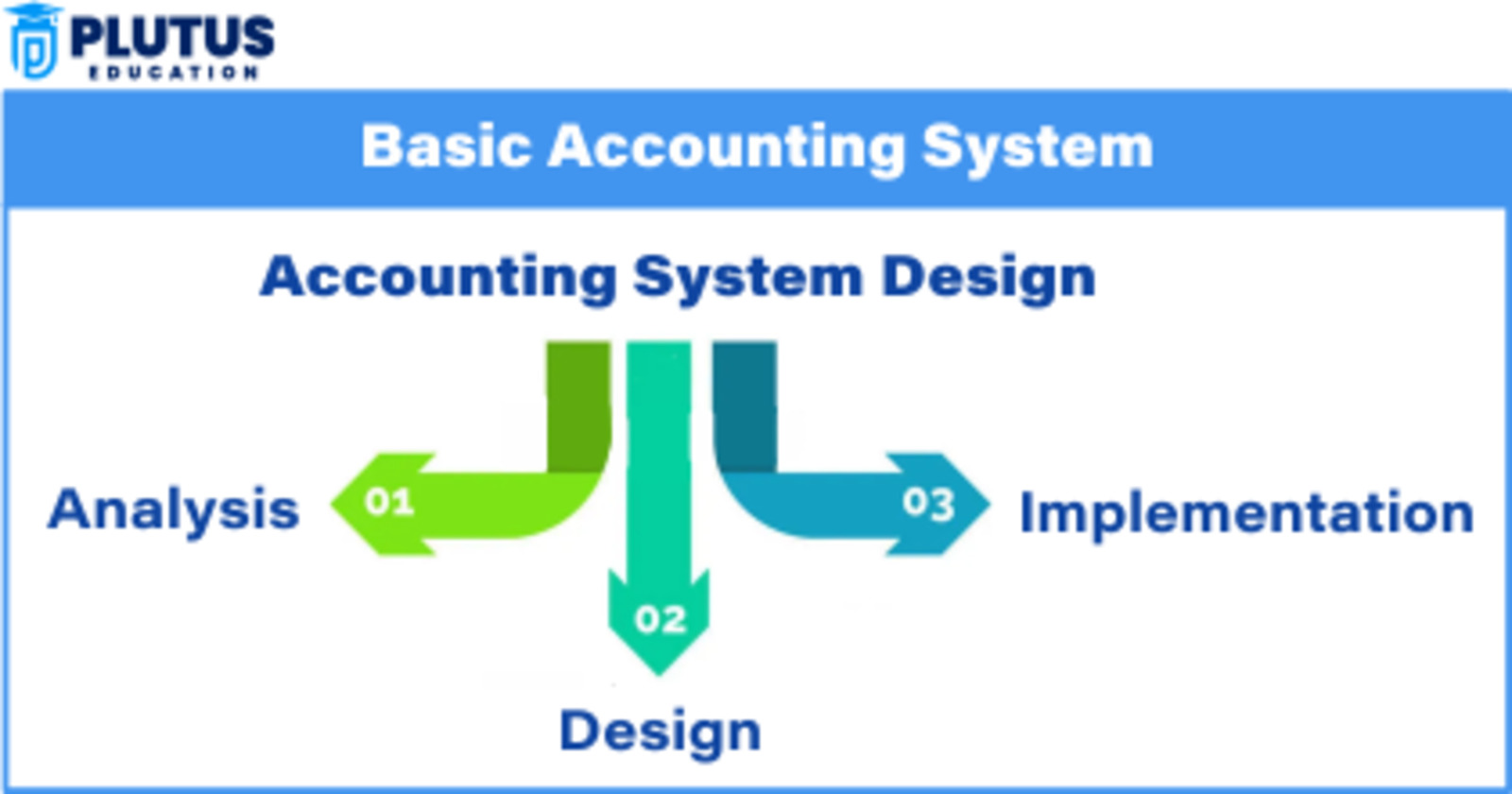Accounting system allows individuals and entities to document their monetary transactions. It indicates how much money comes in and how much goes out. It also reveals how much is remaining. In other words, it manages the money in the correct direction. The only things that all businesses as early as startups and as late as giants should have rules on is an accounting system on how to grow. A few years back even the small shops in India use an accounting system now. So, what’s an accounting system? Even though there are so many possibilities, cash is a way of maintaining financial records. Such records would like to include bills, sales, income, expenses and profit. People now use computers to do this work. This is also called a computerized accounting system. It’s fast and simple and minimizes error.
This will help you know about various kinds of accounting system. It will also describe the accounting information system, the accounting information management system, and the concept of computerized accounting system. You will discover features of computerized accounting system and know how they lead in your business. We will also discuss about single entry system of accounting and basis of accounting system.
What is Accounting System?
An accounting system is a way of tracking, managing, and reporting money-related data. It is a very simple way to store money flow records. This allows a person to know whether his business is in profit or loss.
Why is it important?
Regardless of size, every business in India requires to know their income and expenses. You can’t pay tax or expand the business without proper records. This is where an accounting system comes into play. It makes daily records, monitors the bills and assists in creating reports.
Functions of an Accounting System
- It keeps all the money transactions records.
- It generates statements about finances, such as profit and loss.
- It helps file taxes on time.
- It verifies if money is spent appropriately.
- The historical records assist to plan for the future.
The accounting information system forms a segment of the accounting system. It keeps, stores and processes finance data. It also assists managers in making decisions. Proper accounting information management system helps in day to day work of business and provides timely reports.
Many businesses in a modern world use a computerized accounting system. This has time-saving and human error-reducing effects. It works with software, it works with software. It stores real time data and generates faster report. Some features of computerized accounting system are Eg.axis integrated accounting software, Online data input reports etc.
Every business needs a proper accounting system, either manual or computer-based. This keeps the business running smoothly and checks financial health.
Types of Accounting System in India
There are differing accounting systems associated for various businesses in India. These types of systems vary based on size, nature, and law requirements. Let us dive into details of each type.
Manual Accounting System
This is the oldest method. They hand write entries in books. This is still being used for many small shops and rural businesses. This remains low-cost, but has a higher risk of errors. It needs time and effort.
Computerized Accounting System
This has now become very common in India. Software makes it easy for people to enter and manage the data. It is quick, easy, and minimizes mistakes. Reports are made in seconds. It securely retains information in the system.
What is computerized accounting system?
This is a form of the accounting system, which is adapted with the computer application used to organize financial records. Tally, Zoho Books, QuickBooks, and similar software assist in this.
Theories of computerized accounting system
The idea is based on a computer handling accounts. It replaces manual accounting and does it quicker with software. You don’t have to write longhand. You simply insert information and the application does every records and reports.
Characteristics of the computerized accounting system
- Speed: Can record a lot of transactions rapidly.
- Precision: Minimizes human mistakes.
- Reports Generating reports with no effort
- Backup: (Stores data for long time.)
- Security: Protects information with passwords.
Single Entry System of Bookkeeping
In this, people can record only one side of a transaction. It is primarily used by small businesses that do not require complete records.
For instance, a small tailor who just records income and net expenses.
This method is short and fast but imperfect. Using this, you cannot prepare complete report like balance sheet or trial balance.
Double Entry System
- This is the most used system. Each transaction includes two entries — debit and credit. This helps keep everything all nice and neat record wise. It also abides by rules of accounting.
For instance, if you sell goods, you book income and decrease stock in one go. All types of businesses can benefit from this system. It reflects full money flow and is required for tax filing.
Basis of Accounting System
Today, we will see the basics of how an accounting system works to record income/expenses. It can be either cash basis or accrual basis. Let us dive deeper into both types.
Cash Basis Accounting
With this approach, we only book income when we receive payment. We also recognize expenses when we pay cash. It does not tally money we owe or are going to receive in the future.
For example, a doctor records income only when he or she is paid.
Features:
- Simple and easy.
- Right no credit sales or purchases record
- Best for small businesses.
Accrual Basis Accounting
We recognize income when we earn it, even if we have not gotten paid yet. We must recognize expenses as soon as they are incurred regardless of whether we pay them immediately.
For example, a company accounts for income when goods are delivered, not when the money is received.
Features:
- Provides a comprehensive overview of income and expenses.
- Mandatory for larger businesses.
- Demonstrates good financial health.
Most of the major companies in India follow the accrual system. Cash basis is simple so many small shops have cash basis.

Role of Technology in the Accounting System
Technology has altered how we manage accounts. The emergence of digital tools has made computerized accounting system, a preferred choice over manual books of account by Businesses.
What are Working of Accounting Information System?
It gathers data through sales, purchases and payments. After that, it saves this data in a certain system. Then it processes the data to produce reports. It would be helpful for planning and decision-making.
Advantages of Computerized Accounting System
- Makes work faster
- Stores data safely
- Makes tax filing easy
- Tracks payments in real time
- Reduces paperwork
A creditable accounting information management system keeps the companies in complete control over money. It also tracks money owed and also points to whom we owe money or who owes money to us.
Types of Accounting Softwares available in India
These tools simplify accounting, even for novices. They are bespoke for Indian requirements like GST, TDS and e-invoicing.
| Software Name | Use Case | User Type |
| Tally ERP 9 | GST filing, billing, reporting | Small to Medium |
| Zoho Books | Cloud-based accounting | Freelancers/SMEs |
| Busy | Inventory + Accounting | Small Traders |
| QuickBooks | Invoicing, bank sync | Service Firms |
Relevance to ACCA Syllabus
It is covered in ACCA subjects including Financial Accounting (FA) and Management Accounting (MA). Studying these subjects helps students understand the flow of financial data, recording methods, various types of accounting systems and how they help organizations make decisions and comply with regulations.
Accounting System ACCA Questions
Q1. What does an accounting system do for a business?
A. Reach out more on social media
B. Record and report financial data
C. Hire new staff
D. Manage product quality
Answer: B
Q2. What kind of accounting system allows you to record debit and credit?
A. Cash system
B. Single entry system of accounting
C. Double entry system
D. Non-monetary accounting
Answer: C
Q3. What is you are the key of computerized accounting system?
A. Hand-written ledgers
B. Real-time reporting
C. Delayed closing of books
D. Manual auditing
Answer: B
Q4. Answer: Step one of transaction processing in an accounting information system.
A. Report generation
B. Data analysis
C. Source document collection
D. Ledger balancing
Answer: C
Q5. Inspiration of computerized accounting system is mainly from:
A. Manual recording
B. Verbal updates
C. Automation and software
D. Employee supervision
Answer: C
Relevance to US CMA Syllabus
Part 1: Financial Planning, Performance and Analytics — In the CMA syllabus, the focus is on accounting systems in order to support cost management, budgeting, control, and performance analysis leveraging system-generated financial data.
Accounting System US CMA Questions
Q1. An efficient accounting system assists management with:
A. Creating ads
B. Decisions and control
C. Increasing headcount
D. Legal hiring contracts
Answer: B
Q2. Which of the following is NOT an advantage of a computerized accounting system?
A. Manual corrections
B. Slower data entry
C. Automated reporting
D. Higher operating costs
Answer: C
Q3. Management accounting variance analysis uses data from:
A. HR systems
B. Marketing reports
C. Information system of accounting
D. Legal files
Answer: C
Q4. An Accounting Information Management Systems provides:
A. Pricing recommendations
B. Customer review reports
C. Timely financial data
D. Brand promotion plans
Answer: C
Q5. In budgeting and forecasting, the accounting system provides:
A. Create staff rosters
B. Compare planned and actual figures
C. Build websites
D. Plan factory layout
Answer: B
Relevance to US CPA Syllabus
The sections in CPA on Auditing (AUD) and Business Environment & Concepts (BEC) assess knowledge of accounting information systems, internal controls, data accuracy, and the application of financial systems for compliance, audit preparedness, and fraud prevention.
Accounting System CPA Questions
Q1. What gives a computerized accounting system integrity?
A. Fewer users
B. Internal controls
C. Low bandwidth
D. Extra accounting staff
Answer: B
Q2. The one-system one entry system which small business have very simple transaction.
A. Accrual system
B. Cash receipts and cash payments are recorded and other entries are based on these records.
C. Hybrid system
D. Stock ledger system
Answer: B
Q3. In a computerized accounting system, the audit trail is:
A. Product shipment logs
B. Historical employee data
C. History of money transactions
D. Website traffic data
Answer: C
Q4. What is the risk of weak accounting information system?
A. High customer feedback
B. Financial statements are misleading
C. High product sales
D. Better HR performance
Answer: B
Q5. What is the most widely used software for computerized accounting system of SME?
A. Adobe Reader
B. Tally ERP
C. Photoshop
D. AutoCAD
Answer: B
Relevance to CFA Syllabus
The Accounting System in CFA comes under the Financial Reporting and Analysis (FRA) topic To evaluate firm performance and our investment decisions, analysts have to integrate and assess the source, accuracy and flow of financial data.
Accounting System CFA Questions
Q1. Why is understanding the accounting system essential for financial analysts?
A. To conduct HR interviews
B. To assess data reliability
C. To manage warehouse stock
D. To create marketing ads
Answer: B
Q2. Double entry system is useful because:
A. It saves time
B. It keeps a record of both debit and credit
C. It only tracks income
D. It avoids all errors
Answer: B
Q3. What is a disadvantage of single entry system of accounts?
A. Too much information
B. Hard to use
C. And you cannot keep track of every single one of your financials.
D. Very expensive
Answer: C
Q4. How does computerized accounting system helps analysts?
A. It manages office lighting
B. It provides up to date financial data
C. It sets employee salaries
D. It edits photos
Answer: B
Q5. An organized accounting information system enables analysts to:
A. Increase share prices
B. Change revenue policies
C. Impartially assess the firm’s progress
D. Reduce inflation
Answer: C


